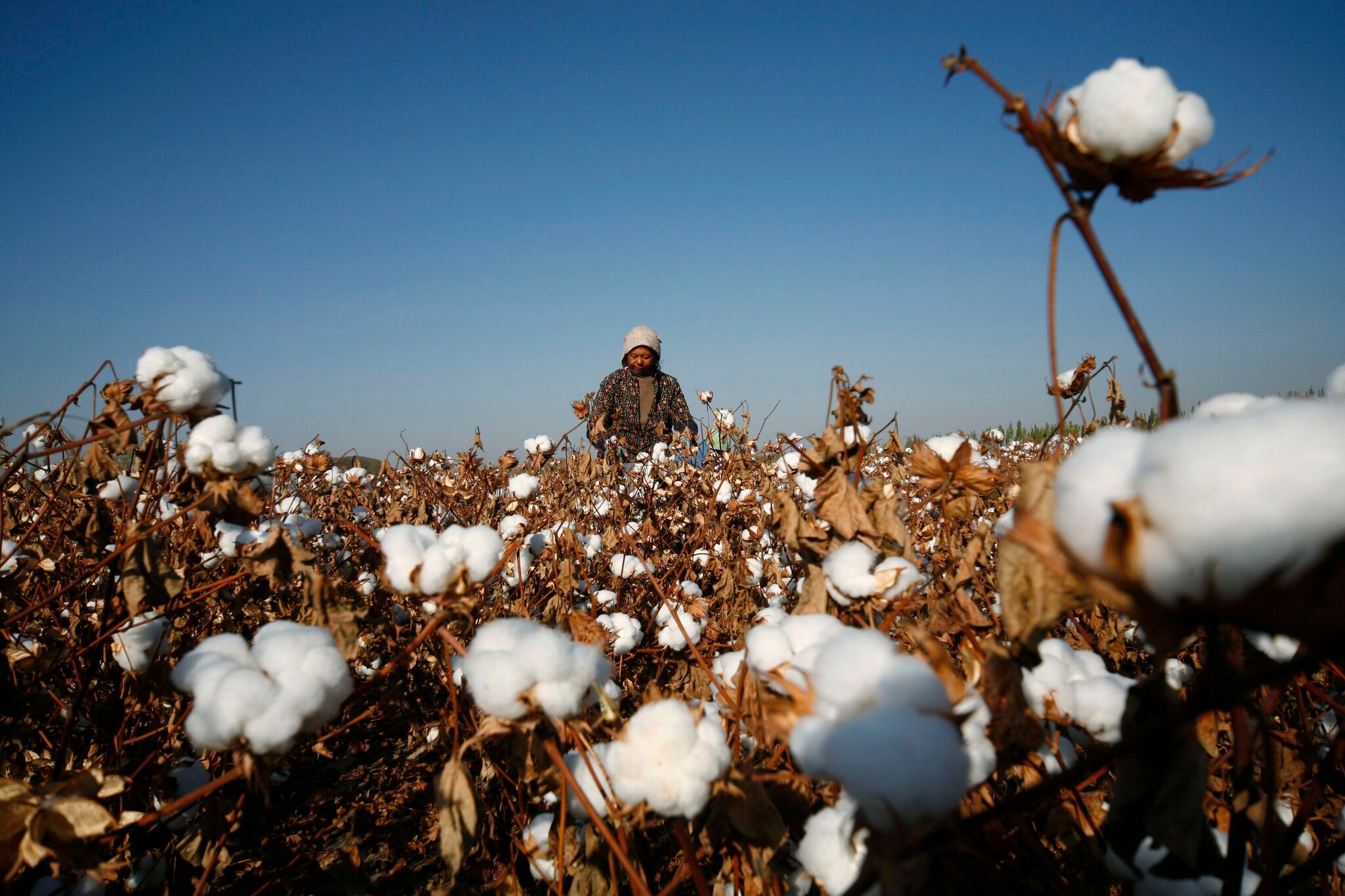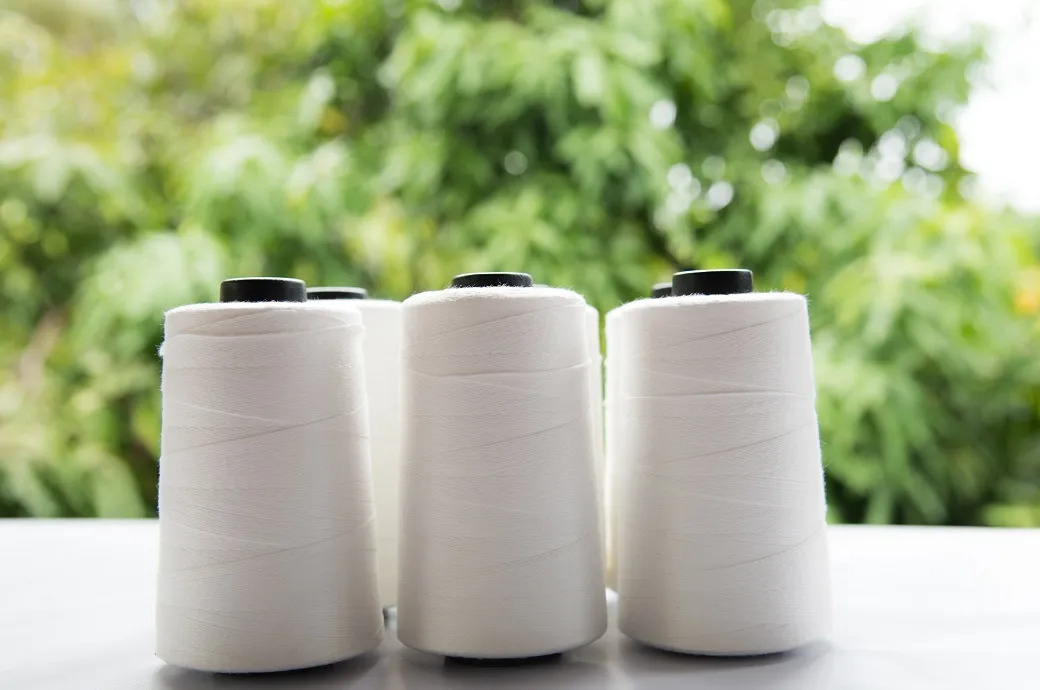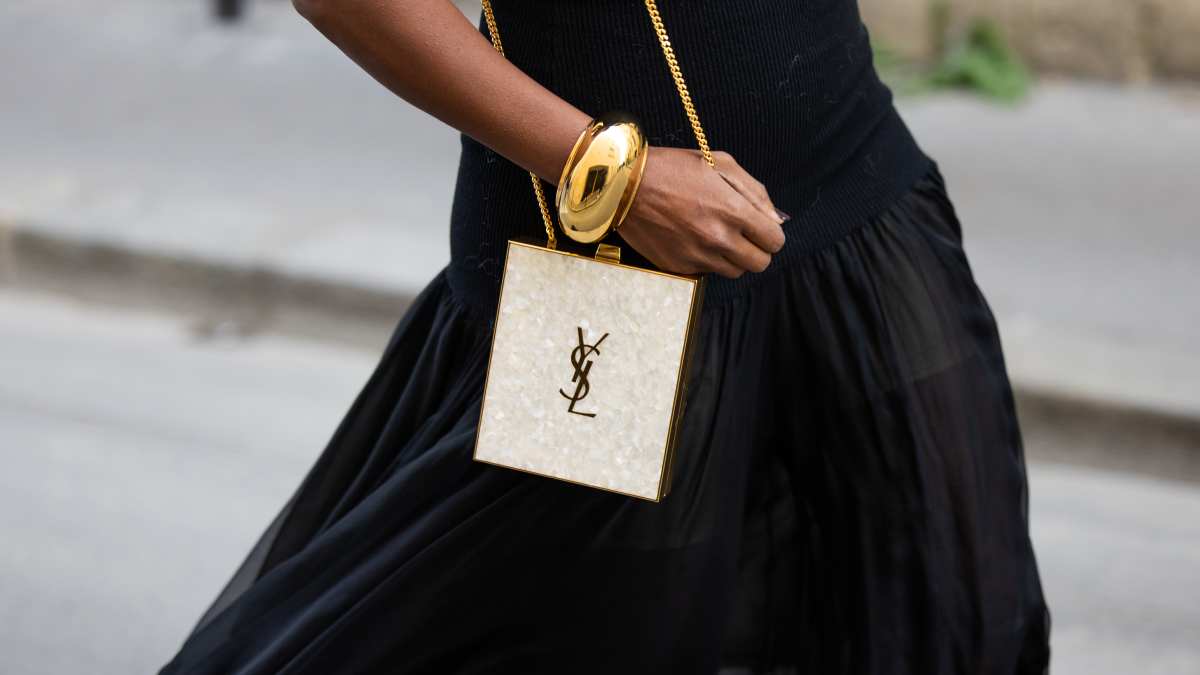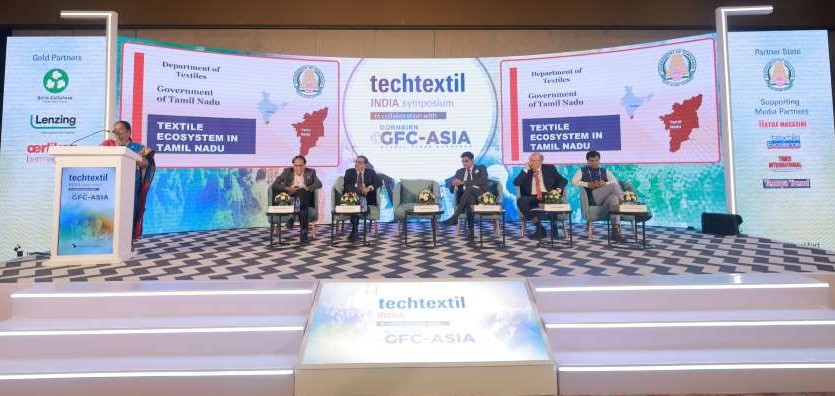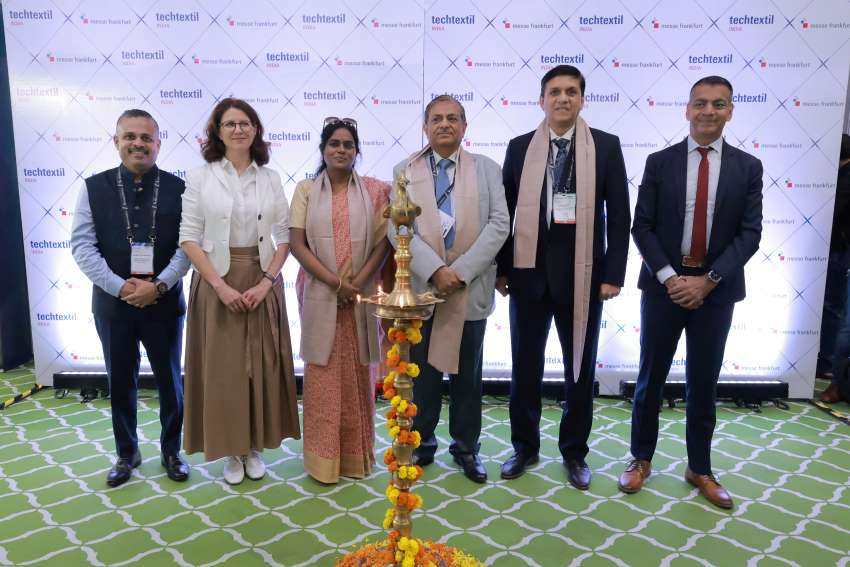FW
Nike and fashion designer Martine Rose have launched a new collaborative apparel collection inspired by the world of gaming. Launching globally on October 30, the collection reimagines esports as a realm of athleticism, self-expression, and style.
Eight years into their creative partnership, Martine Rose and Nike have consistently blurred the lines between sport, culture, and identity. This latest chapter specifically celebrates the inclusivity and individuality of gaming communities.
The collection features relaxed, functional silhouettes, including apparels like football kits, ski jackets, hoodies and track pants. The oversized hoodie and joggers recall Martine Rose’s Spring/Summer 2015 collection, while a vibrant red colorway nods to early-2000s grime culture.
Further, the collection includes a reinterpreted football kit featuring a new Nike x Martine Rose crest, and a ski parka that references retro ‘nerdwear.’ It also offers a reissued cross-body bag adapted from Nike’s archives, a subtle wink to UK street style.
The collection also introduces two new colorways of the Shox MR4 - the unique hybrid dress shoe and sneaker that first debuted in 2022. Distinguished by its squared-off toe and heeled Shox columns, the silhouette will now be available in white and silver.
The launch is supported by a campaign that features elite gamers, including ANa, Billy Mitchell, Scarlett, SonicFox, and TenZ.
One of Italy’s premier textile and fashion companies, OVS has officially partnered with Cotton made in Africa (CmiA) to ensure verifiable transparency and traceability for the company, from the initial cotton bale to the final product.
So far in 2025, the Italian fashion house has already brought nearly 2.5 million items made of CmiA-verified cotton to market, including a line of children’s apparel. OVS products containing CmiA cotton are marked with the ‘Cotton made in Africa Inside’ label. This designation signifies that the cotton is physically traceable throughout the entire value chain.
To qualify for this label, products must be proven to contain only CmiA-verified cotton. In 2025 alone, OVS has produced almost 2.5 million textile items under the CmiA Inside label, primarily consisting of denim products like jeans and denim jackets.
Tina Stridde, the Managing Director, Aid by Trade Foundation, avers, OVS’s implementation of Cotton made in Africa Inside makes a strong statement about transparency and traceability.
In addition to criteria for the protection of water, soil, and biodiversity, the CmiA sustainability standard also enforces strict social criteria and indicators for gender equality, human rights and community support.
An internationally recognized standard for sustainably produced cotton and the largest such standard in Africa, Cotton made in Africa (CmiA) guarantees transparent traceability and is 100 per cent GMO-free. Over 30 per cent of African cotton is CmiA or CmiA Organic verified. By using this cotton, over 60 textile companies and fashion brands support approximately 800,000 small-scale farmers in practicing ecologically and economically resilient agriculture, improving their families' living standards, and protecting the environment.
The International Textile Manufacturers Federation (ITMF) and the International Apparel Federation (IAF) successfully concluded their second joint convention, held this year in Yogyakarta, Indonesia. Working closely with the host, the Indonesian Textile Association (API), the event attracted over 400 delegates from around the globe, representing the entire textile and apparel value chain.
Highly praised, the conference program featured a diverse range of high-level discussions on issues shaping the global industry's future. It focused on key topics including Technology adoption and AI applications; Evolving legislation and the reduction of audit fatigue; Decarbonization and fiber innovation, transformation of the Indonesian textile and apparel sector.
The event also celebrated excellence, showcasing innovation, sustainability, and collaboration through presentations by the winners of the ITMF Award.
Beyond the sessions, ITMF and IAF upheld their tradition of hosting unique and culturally rich social events. Delegates were welcomed by the Sultan of Yogyakarta at a distinguished opening dinner. The Gala Dinner provided a spectacular setting for networking and celebration, held against the backdrop of the iconic Prambanan Temple.
This special evening also marked the beginning of the tenures for new leadership: Juan Parés as the new President, ITMF and Stefano Festa Marzotto, President, IAF.
The convention program provided delegates with valuable firsthand insights into Indonesia's dynamic ecosystem through company visits. Attendees toured prominent facilities, including PT Dan Liris, PT Pan Brothers, and PT Ungaran Sari Garment, witnessing the country’s commitment to manufacturing excellence, innovation capacity, and sustainability.
The success of the 2025 convention was strongly supported by the Indonesian Textile Association (API), PT Dan Liris, and PT Pan Brothers. Collectively, they projected a positive and ambitious image of Indonesia as a premier, forward-looking location for both textile and garment production.
During its Annual Conference & IAF World Fashion Convention 2025, held on October 24, 2025 in Yogyakarta, Indonesia, ITMF elected new Board Members.
The Federation elected Juan Parès(Spain) as the new President. ITMF while Yan Yan from China elected as the new Vice President. Meanwhile Mustafa Denizer was re-elected as the Vice President while Ernesto Maurer was re-elected as Honarary Secretary.
Addtionally, the Board also re-elected the executive Board Members including Salman Ispahani (Bangladesh), Yingxin Xu (China), Suchita Jain Oswal (India), Tae Jin Kang (Korea), Anees Khawaja (Pakistan), Stefan Hutter (Singapore) and Uday Gill.
Rafael Cervone (Brazil), Mohammad Kassem (Egypt), Michelle Tjokrosaputro (Indonesia), Loek de Vries (Netherlands), and Muharrem Kayhan (Türkiye)were co-opted to the Board.
KV Srinivasan (India) was appointed Honorary Life Member of the Federation in recognition of his outstanding contribution to the Federation as Vice President (2018-2023) and as President (2023-2025).
Global supply chain solutions company offering customized solutions to global brands and retailers across services like product development, sourcing, manufacturing, and brand management, PDS Ltd registered a 14 per cent rise in revenue from operations to Rs 3,419 crore while their consolidated revenue for FY26 increased to Rs 12,578 crore.
By October 2025, the company’s order book increased by 15 per cent Y-o-Y to Rs 5,308 crore, thus indicating steady business momentum amid global macroeconomic headwinds. Their net working capital days improved from 17 days (March 2025) to 6 days (September 2025), driving cash flow from operations of Rs 593 crore.
According to Pallak Seth, Executive Vice Chairman , the results demonstrate, sustainable growth is achieved through focus, efficiency, and disciplined execution. The company’s growth journey is centered on strengthening and expanding the potential of their existing businesses and partnerships, with no new investments at this stage. By sharpening their focus on execution, leveraging synergies, and fostering collaboration across their global network, the company is building a stronger, more efficient, and purpose-driven entity — one that grows sustainably and responsibly while upholding the highest standards of governance.
Sanjay Jain, Group CEO, adds, the company’s focus on driving operational excellence across their core business verticals can be seen in their results, with optimized working capital and reduced net debt levels. By focusing on high-impact areas and streamlining underperforming verticals, the company fosters responsible growth and a future-ready organization scaling towards enhancing profitability.
A global fashion infrastructure platform, PDS offers product development, sourcing, manufacturing, and distribution for major brands and retailers worldwide handling over $2.2 billion of Gross Merchandise Value. The Company operates a vast global network covering over 90 offices in 22 countries, with over 4,500 employees and 6,000 factory associates worldwide.
PDS also offers a bespoke end-to-end outsourcing solution, engaging dedicated talent and infrastructure as an extended arm of retailers and brands.
Eastman Naia has secured its fourth consecutive ‘Dark Green Shirt’ rating in Canopy’s Hot Button Report at the 2025 Textile Exchange Conference in Lisbon, further advancing its ambitious sustainability targets for the 2025–2030 period.
The Dark Green Shirt is Canopy’s highest recognition, annually ranking man-made cellulosic fiber producers on key factors like forest conservation, responsible sourcing practices, and supply chain transparency. This repeated honor confirms Naia’s continued leadership in environmental stewardship, establishing it as one of the most trusted and transparent fiber platforms in the industry.
The award announcement was timed with the release of Naia’s 2025 Sustainability Progress Report and the unveiling of its updated 2030 sustainability goals. These new targets focus on critical areas, including climate mitigation, circularity at scale and social impact.
These milestones collectively emphasize Naia’s long-term commitment to delivering measurable, transparent progress across the entire value chain and working to reshape the materials economy for the better.
At the conference, Naia also showcased few more versatile fibers including the Naia On the Move featuring the high-performing Naia Renew staple fiber, Naia Denim which blends comfort and circularity for authentic, fashionable denim applications and the new Naia GlowNow fiber to promoteits signature filament yarn for women’s low-impact fashion.
All Naia fibers are sourced from sustainably managed forests. Furthermore, products made with Naia Renew contain 40 per cent GRS-certified recycled content achieved through Eastman’s advanced molecular recycling technology.
Founded in 1920, Eastman is a global specialty materials company dedicated to enhancing the quality of life in a material way. Headquartered in Kingsport, Tennessee, US, the company works with customers to deliver innovative products while upholding a strong commitment to safety and sustainability. The company employs approximately 14,000 people worldwide, serves customers in over 100 countries, and generated revenue of approximately $9.4 billion in 2024.
Valued at $ 5.2 billion in 2025, the global textile waste recycling market is estimated to grow consistently at a rate of 4.8 per cent CAGR until 2035, reaching the value of $8.7 billion.
As per a report by MarketGenics India, Asia Pacific dominates the share of the worldwide market at 62.0 per cent, with its revenues amounting to $3.2 billion, with China projecting the highest development at 6.2 per cent CAGR. These dynamics indicate a changing industrial emphasis on minimizing landfill waste and chemical use and increasing cost-effectiveness with green manufacturing.
Growing numbers of environmentally aware consumers and tough international policies such as Extended Producer Responsibility (EPR) are driving change, with brands being pushed to go sustainable. Governments around the globe are enacting tougher recycling legislation, and innovations like 100 per cent automatic textile waste sorting machines are coming forward to speed up recycling.
A global leader in specialty chemicals, Archroma has been honored with the International Textile Manufacturers Federation (ITMF) 2025 Sustainability & Innovation Award for its product, Denim Halo. This revolutionary denim pretreatment and dyeing process gives brands and mills a straightforward way to create the highly sought-after distressed denim look while significantly cutting down on environmental impact and utilizing cleaner chemistry.
Archroma believes in challenging the status quo. Under their planet-conscious roadmap, the brand seeks solutions that not only advance sustainability but also nurture the creativity and profitability of textile manufacturers, says Dhirendra Gautam, Vice President Commercial, Archroma.
While distressed denim has been a consumer favorite for decades and is more popular than ever, achieving the coveted worn and faded appearance has always been problematic. Traditional methods often involve manual scraping, the use of hazardous potassium permanganate sprays, or energy-intensive stone-washing. Conventional indigo and sulfur dyeing processes further contribute to the burden with high water and energy consumption and significant wastewater discharge.
Denim Halo offers a breakthrough alternative to these issues. The innovation is inspired by a unique new chemistry, Dirsol RD, and a broad portfolio of textile dyes developed through decades of advanced research to produce laser-friendly denim with outstanding contrast on intense black and indigo shades.
The core component, Dirsol RD p, is a new, patented viscosity-modifying pretreatment that enables superficial dyeing. This reduces water, energy, and greenhouse gas emissions in processing and wash-off. In the Denim Halo process, it is combined with a tailored Archroma dye solution according to the mill’s specific production needs.
The benefits of Denim Halo extend beyond sustainability to include significant gains in safety and economics for manufacturers. Mills can achieve distressed effects without changing standard dye recipes or existing equipment setups. The process enhances worker safety by enabling high-contrast laser etching, which eliminates the need for hazardous potassium permanganate and manual scraping. It reduces caustic soda consumption in sulfur mercerizing and requires less chemical use in dyeing and finishing. Besides, it also results in reduced yarn shrinkage and improved garment tensile strength, particularly on black denim, while enabling easier washdown.
The International Apparel Federation (IAF) has appointed Stefano Festa Marzotto as its new President. The announcement was made during the federation's annual convention held in Yogyakarta, Indonesia. Currently holding the position of Commercial Director, Miles Manifattura Spa, Marzotto steps into this significant global role to guide the apparel industry's premier organization.
During his tenure as the President, Marzotto is set to focus on addressing the complex issues facing the modern apparel sector. He plans to tackle these challenges with a steadfast determination and a spirit of deep collaboration with the IAF Board and the federation's management team.
The IAF serves as a powerful global organization, representing an enormous segment of the apparel industry. Its membership spans across countries and includes over 150,000 companies and a workforce of approximately 20 million employees.
The Federation aims to actively promote the development of supply chains that are smarter, stronger, and more sustainable across the entire apparel industry. Under Marzotto's leadership, the IAF is expected to intensify its efforts in driving innovation and responsible practices in manufacturing, sourcing, and logistics. His appointment is seen as a key step in furthering the IAF's commitment to a more ethical and efficient global textile and clothing sector.
The European Commission has proposed targeted measures and simplifications for the implementation of the EU Deforestation Regulation (EUDR) to reduce the administrative burden on certain companies and ensure the smooth function of the new IT system.
These proposed changes are currently being discussed by the European Parliament and the Council, but the key measures include:
The Commission's proposal focuses on streamlining requirements for actors further down the supply chain and for smaller primary producers.
Only the first operator placing a product on the EU market would be obliged to submit a Due Diligence Statement (DDS) into the EUDR IT system. This means downstream operators and traders (like retailers or manufacturers who process the product further) would no longer need to submit a separate DDS, significantly simplifying the process for them. They would still need to collect and pass on the reference numbers.
Micro and small primary operators from countries classified as low-risk would only need to submit a simple, one-off declaration into the IT system, replacing the need for regular, full DDS submissions. This primarily benefits small EU farmers and foresters.
To ensure the EUDR Information System can handle the anticipated load and to allow companies more time to prepare, the Commission proposed transitional periods.
For large and medium enterprises, the application date remains December 30, 2025. However, they will benefit from a six-month grace period for checks and enforcement, meaning enforcement measures would not begin until June 30, 2026.
For micro and small enterprises, the application date is postponed by one year, with obligations applying from December 30, 2026 (instead of the previously set June 30, 2026).
These targeted adjustments are designed to maintain the core objective of the EUDR—to keep products linked to deforestation off the EU market—while making compliance more manageable and efficient.

